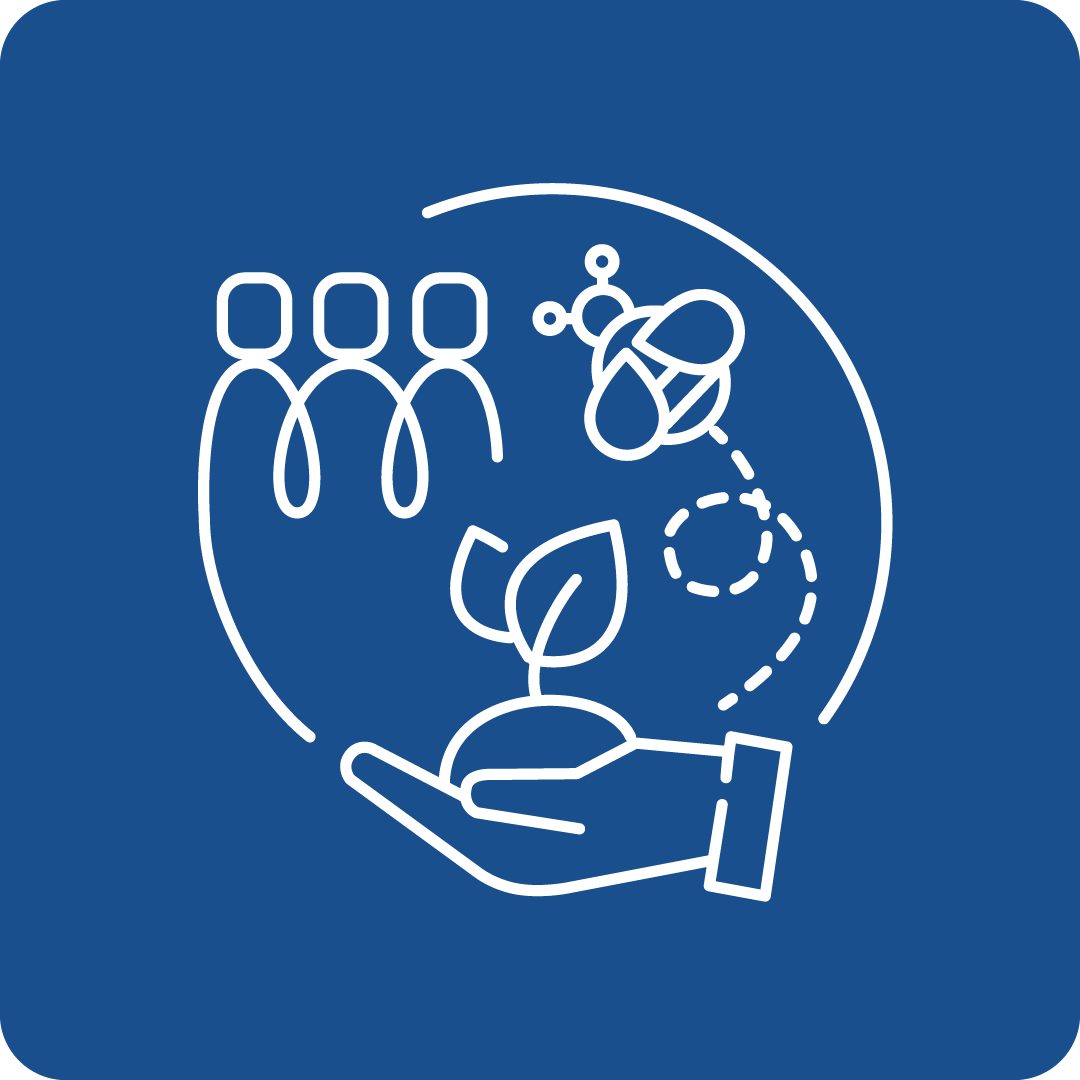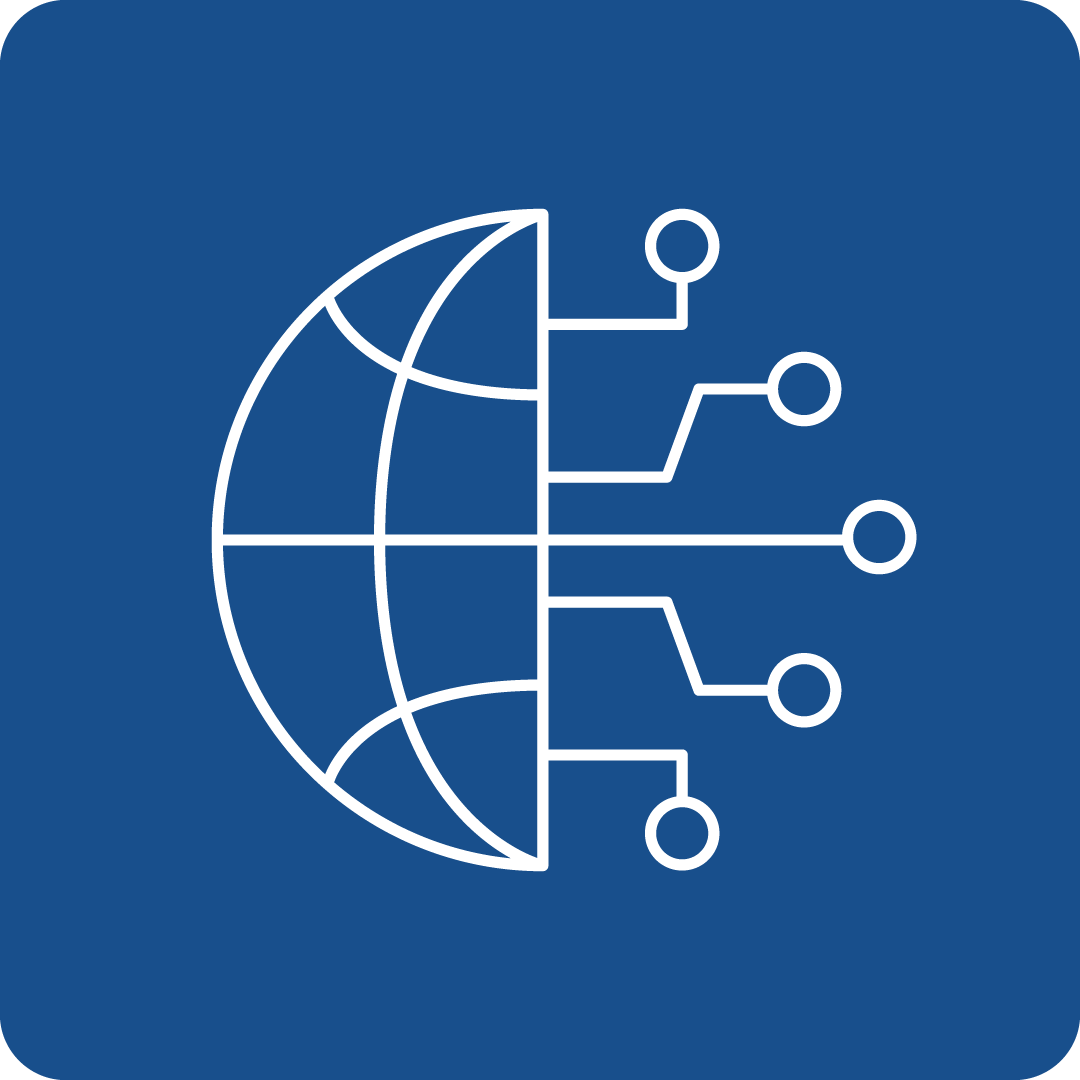Filter Search for grants
Call Navigation
Deadline expired
The deadline for this call has expired.
Call key data
Interregional Innovation Investments Strand 1
Funding Program
Interregional Innovation Investments
Call number
I3-2025-INV1
deadlines
Opening
22.05.2025
Deadline
13.11.2025 17:00
Funding rate
70%
Call budget
€ 23,000,000.00
Estimated EU contribution per project
between € 2,000,000.00 and € 10,000,000.00
Link to the call
Link to the submission
Call content
short description
The objective of the I3 Instrument Strand 1 call for proposals is to support interregional innovation investments by offering consortia of innovation actors from the quadruple helix ecosystems the necessary financial and advisory support to bring their innovations to a mature level, ready for commercialisation and scale-up, while bridging and reducing the innovation divide in Europe with a strong cohesion policy focus of integrating all regions and in particular the less developed regions into European value chains.
Call objectives
Strand 1 of the I3 instrument seeks to increase the competitiveness and the resilience of EU value chains on the basis of interregional cooperation and shared smart specialisation areas.
Thereby, applications under this call seek to facilitate:
- the development of already existing or the creation of new interregional and cross-border value chains and a better connection between regional innovation ecosystems;
- the collaboration between innovation actors, especially SMEs, from less developed regions and innovation actors, especially SMEs, from more developed regions, contributing to cohesion policy objectives;
- the support of innovation actors with investment ideas that are ready to be developed into mature business cases;
- the identification of new regional technological domains and market opportunities with the EU priorities and bridging the gap between the supply and demand sides to help innovation ecosystems overcome market failures.
I3 Instrument business investment cases start with a minimum TRL 6 and have the ambition to facilitate demonstration and to accelerate market uptake and commercialisation. The development of the business and investment cases is facilitated by the regional innovation ecosystems with companies in the lead.
The support to be provided shall be (a) financial support, through direct funding to consortium beneficiaries or through cascade funding/financial support to third parties (FSTP), and (b) non-financial support, such as business and investment planning, protection of IPR, certification, commercialisation, standardisation, tailored support for the integration of KETs/deep tech in production processes, support in testing, demonstration and piloting new solutions.
At the end of the project implementation, all involved regions and partners should have a clear perspective on how to exploit and build on the I3 project results, including through the broad introduction of new products, services, or production processes.
Applications under this call for proposals must address one of the following thematic priorities:
- Digital transition or
- Green transition or
- Smart manufacturing
Each project application under this call must address one thematic priority.
1. Digital transition
Digital technologies present an enormous growth potential for Europe. This thematic priority targets investments in businesses and public administrations (notably in the part related to the innovation sector) with regards to the digital transition. Projects will unlock the potential for digital growth, deploying innovative solutions that improve accessibility and efficiency of services (both for businesses and citizens) while bridging the digital divide and contributing to the cybersecurity.
This thematic priority encourages applications in one or more or a combination of the following investment areas (non-exhaustive list):
a. Digital economy innovation
- The deployment of innovative solutions for businesses digitalisation and digital services, including the use of artificial intelligence (AI) and its innovative application and/or integration into strategic sectors as per the Competitiveness Compass;
- ICT up-take in SMEs applied to traditional and emerging sectors; B2B; B2C; Customer to Customer, including infrastructures and services (digital innovation hubs, living labs, etc.);
- Demonstration of innovative digital technologies in view of the commercialisation of research results and a better integration in EU value chains;
- User driven innovation and valorisation of traceability and big data;
- Companies reinforcing EU cybersecurity value chain and protecting from hacking, ransomware and identity theft;
- Investments in innovative solutions in technology that will increase the security and resilience of communication, transport and digital networks;
- “Digital based” open innovation, supporting entrepreneurial discovery processes and cooperation between academia and businesses in the framework of smart specialisation;
- Digital skills for companies adopting innovative digital technologies (upskilling and reskilling) in the framework of investments relevant for Smart Specialisation.
b. Digital transformation of public administration and public services
- New or significantly upgraded services for e-government, including the take-up of Europe wide interoperable services which improve the efficiency of services delivered by public administrations to citizens, companies and other public bodies by using information and communication technologies such as artificial intelligence;
- Investments in innovative solutions for cybersecurity; investments in innovative solutions helping administrations to make services user-friendly, accessible and more interoperable. Those investments might include the demonstration of the validity of new digital technologies in view of the large-scale adoption of new IT systems.
- E.g. technologies for digitalisation in the health care system.
2. Green transition
Turning climate and environmental challenges into opportunities for competitiveness in Europe is the ambition of the green transition, as outlined in the Clean Industrial Deal and the Competitiveness Compass. Both these initiatives have the goal to make Europe a resource-efficient and competitive economy, while reducing EU reliance on fossil fuels. The EU has set targets to reach climate-neutrality by 2050. This framework can drive competitiveness, as it gives certainty and predictability to companies and investors alike. This will be achieved by nurturing competitive manufacturers who drive decarbonisation through innovation, create quality jobs and contribute to our open strategic autonomy, fully respecting and applying the principle of technological neutrality for Member States as appropriate. This thematic priority intends to support innovative value chain investments, to boost our competitiveness through green technology with a focus on energy-intensive industries and the clean-tech sector as per the Clean Industrial Deal.
It also intends to provide support to interregional investments in resilient and sustainable food systems and agriculture, clean energy, green industry, energy-efficient buildings and renovation, sustainable mobility and eliminating pollution.
This thematic priority encourages applications in one or more or a combination of the following investment areas (non-exhaustive list):
- Innovative investments in decarbonisation, reducing greenhouse gas emissions and contributing to improve air quality, health and well-being;
- Investments in circularity, including but not limited to the management of natural resources, including the use of recycled materials, especially construction materials, plastics and textiles, to stimulate demand for secondary markets raw materials;
- Innovative business investments related to smart, sustainable/efficient transport solutions and/or alternative fuels;
- Business investments in renewable energy and energy efficiency to make industry more sustainable;
- Business investments related to energy efficiency in buildings;
- Business investments related to a sustainable blue economy, contributing to the coastal protection;
- Business investments in circular economy to replicate and scale up successful circular economy solutions, which can generate EU added value;
- Investments in bioeconomy, efficient and sustainable agriculture and forestry, innovation in marine/ maritime and inland water sustainable solutions.
- Investments in sustainable business models and alternative modes of production and consumption (e.g. leasing, repair, modular design, industrial symbiosis…).
- Innovative investments in SMART cities;
3. Smart manufacturing
This thematic priority focuses on improving the delivery of new or improved products, processes or services in the manufacturing industry and fostering competitiveness, strategic autonomy and a circular economy approach, as outlined in the Competitiveness Compass and the Clean Industrial Deal. In the context of advanced manufacturing; knowledge and innovative technologies are used to produce complex products and improve processes to lower waste, pollution, material consumption and energy use. Robotics, 3D and 4D printing, artificial intelligence as well as high performance computing for modelling are important elements in advanced manufacturing.
This thematic priority supports interregional innovation investments for the uptake of new or improved manufacturing solutions, as well as for supporting industry to face the challenge of digitalisation and to promote the shift towards a more environmentally sustainable production (zero pollution ambition for a toxic-free environment). This thematic priority encourages applications in one or a combination of the following investment areas (a non-exhaustive list):
- Demonstration processes, i.e. helping new industrial products to reach the market faster or having more efficient and sustainable processes adopted by the industry.
- Valorisation of research results and practical applications for innovation diffusion. This might include the active involvement of ecosystems and the co-creation process with stakeholders and end-users.
- Connecting or making complementary use of testing and demonstration facilities at interregional level. In this framework, synergies with circularity hubs are encouraged.
- Improving the use of natural resources and the reuse of materials, promoting circularity models (de- and remanufacturing) and investments in carbon neutrality. Specific implementation (including funding) strategies, ensuring the participation of all stakeholders (industry, SMEs, local authorities, educational institutions and civil society).
- Implementation of interregional demonstration cases to test and replicate the results.
- Innovation diffusion and involvement of SMEs in EU value chains.
- Innovative investments in advanced materials.
read more
Expected effects and impacts
Expected impact at the closure of the project (non-exhaustive list):
- Innovative technologies tested and adopted by companies and public administration;
- Innovative solutions deployed improving businesses confidence, competences and means to digitalise and grow;
- Contribution to digitisation and health systems transformation, through various types of innovation and the supply of IT services;
- Uptake of technologically/economically reliable and viable solutions on the market;
- Deployment of new green and digital technologies fostering the growth of Europe’s manufacturing sector;
- Innovative technologies adopted by SMEs;
- Identification of possible sources of funding/funding mix, to cover the residual investment needs (public-private partnerships for the deployment of innovation, the collaboration with venture capitals, EIB group loans etc);
- Strengthening innovation diffusion channels;
- Reinforcing the capacity of regions to co-invest together, joining forces on common S3 investment priorities (interregional investments).
Long-term impact (non-exhaustive list):
- Increased companies’ productivity and efficiency;
- Improved user-friendly, accessible and interoperable public services;
- Improved level of digital skills;
- Improved EU innovation capacity and competitiveness
- Creating new market opportunities for EU companies;
- Making the EU industry more efficient and sustainable;
- Improved way of living and of doing business;
- Increased social and territorial cohesion as well as personal well-being;
- Improved education and vocational training systems (indirectly);
- Reinforcing/reshaping EU value chains whilst increasing EU competitiveness in global markets;
- Unlocking the innovation potential of EU regions/countries;
- Contributing to the European Green Deal objectives;
- Positive impact on environment, health, climate, social and economy;
- Economic growth and job creation
- Reinforcing/reshaping EU value chains whilst increasing the competitiveness of the EU in global markets.
The following Key Performance Indicators (KPIs) have been identified (where applicable):
Location - Interregional dimension
- Number of regions involved in the value chains (NUTS1, NUTS2 - less developed/more developed/transition/outermost region);
- The interregional character of the project, considered at portfolio level (quadruple helix stakeholders from different regions participating in the investment portfolio)
Type of project participants
- Type of organisations representing both demand and supply side: SMEs and start-ups, public authorities, universities, research and technology organisations, Industry and large companies, intermediaries (regional development agencies, innovation agencies, cluster organisations, business associations, etc), civil society and end users, EU associations and interest groups, other.
Innovation
- Innovation maturity-technology readiness: TRL at project start (minimum TRL 6), TRL at project end (TRL 7-9);
- Innovation maturity-business readiness: infrastructure and equipment/skills, financial commitment to co-invest, standardisation and certification, other
Socio-economic benefits
At the end of the project:
- Number of value chain investments in the portfolio;
- Number of new regions/regional ecosystems integrated into the value chain;
- Number of companies involved in the value chain; − Number of SMEs involved in the value chain.
Employment
At the end of the project:
- Number of jobs created (FTE) (male, female, non-binary)
Investments
At the end of the project:
- Investment dimension: Regional, National, European, International;
- Investments mobilised: Private financing mobilised (in EUR), Public financing mobilised (in EUR), Total investment mobilised (in EUR).
IPR dimension
At the end of the project:
- Number of patents exploited or valorised;
- Number of licences;
- Number of designs;
- Number of trademarks;
- Number of geographical indications;
- Number of copyrights, trade secrets, NDAs exploited or valorised.
Gender (Persons reached)
At the end of the project:
- Number of persons reached: male, female, non-binary
read more
Expected results
Projects selected under this call for proposals will be implemented through an investment portfolio approach, where beneficiaries (including the SMEs) as well as SMEs as third parties performing tasks complementing the main project investments activities (see below section on financial support to third parties - FSTP) can play a role in specific segments of EU value chains. Within a specific thematic/technological area of cooperation, the project portfolio might be composed of several investment-ready sub-projects that address one or several bottlenecks in a value chain identified in the application. These sub-projects are necessary to test and demonstrate the validity of technologies/solutions and accelerate innovation uptake, thus increasing the competitiveness of EU value chains.
The proposal must clearly describe the progress from innovation towards commercialisation and upscaling that is expected as a result of the project and its investment portfolio.
The proposal must also provide an outline of an exploitation plan that sets out the expected way forward following the completion of the project, in particular, if the new products/processes or services supported by the I3 Instrument are not yet ready for the market.
Target investments can be both tangible and intangible investments in the form of one or more of the following activities:
- Financial support for producing plans and arrangements or designs for new, altered or improved products, processes or services such as demonstrating, testing and piloting activities by companies, large-scale product validation and market replication (new to Europe and new to the application sector);
- Adaptation of existing prototypes (i.e., by combining two or more key enabling technologies) and tailoring them to the companies’ needs for the demonstration in a real environment (ex-novo prototyping is not eligible);
- Development of portfolios of projects for close-to-market investments that deploy new or improved technologies or processes;
- Activities directly aiming at producing plans, arrangements or designs for new, altered or improved products, processes or services (adaptation to the companies’ needs). This can include testing, demonstration, piloting, large-scale product validation and market replication;
- Activities connecting or making complementary use of testing and demonstration facilities to accelerate market uptake and scale-up of innovative solutions in shared smart specialisation areas;
- Innovation services for the development of the business investment interconnecting value chains;
- Test beds and complementary activities needed to improve regulations, standards and/or to remove barriers and bottlenecks to innovation;
- Activities bringing innovative ideas and new products to the market;
- Advisory support for investment (developing or implementing interregional business and “go to market” investment plans in specific value chains).
Support actions for networking, for testing new approaches for better innovation support or for enhancing services to SMEs (through collaboration, peer-learning or matchmaking, etc.) are also encouraged, particularly when aimed at replicating project outcomes in less developed regions. These support actions will only be eligible in combination with the implementation of the tangible and intangible investment listed above.
This I3 Instrument Strand 1 call for proposals will not support activities that do significant harm to environment objectives within the meaning of Article 17 of the EU Taxonomy Regulation. I3 funding therefore cannot be awarded to projects that do not comply with this principle (e.g. any proposal dedicated to increase the efficiency of fossil fuel technologies or of fossil fuels). Applicants will need to verify that their proposal complies with this requirement.
Activities (financial and non-financial support) must reflect a balanced participation of beneficiaries from regions with varying levels of development and innovation performance, with a strong emphasis on supporting and leveraging the potential of less developed regions and other categories of regions (such as EU outermost regions or regions with specific challenges). Involvement of these regions should be reflected both in terms of balanced budget distribution and ensuring their participation results in concrete benefits for these regions.
read more
Eligibility Criteria
Regions / countries for funding
eligible entities
Education and training institution, International organization, Non-Profit Organisation (NPO) / Non-Governmental Organisation (NGO), Other, Private institution, incl. private company (private for profit), Public Body (national, regional and local; incl. EGTCs), Research Institution incl. University, Small and medium-sized enterprise (SME)
Mandatory partnership
Yes
Project Partnership
In order to be eligible, the applicants (beneficiaries and affiliated entities) must:
- be legal entities (public or private bodies)
- be established in one of the eligible countries, i.e.:
- EU Member States (including overseas countries and territories (OCTs))
- non-EU countries: listed EEA countries and countries associated to the I3 Instrument (list of participating countries)
Specific Cases
- Entities from other countries (not listed above) are exceptionally eligible, if the granting authority considers their participation essential for the implementation of the action.
- Natural persons are NOT eligible (with the exception of self-employed persons, i.e. sole traders, where the company does not have legal personality separate from that of the natural person).
- International organisations are eligible. The rules on eligible countries do not apply to them.
- Entities which do not have legal personality under their national law may exceptionally participate, provided that their representatives have the capacity to undertake legal obligations on their behalf, and offer guarantees for the protection of the EU financial interests equivalent to that offered by legal persons.
- EU bodies (with the exception of the European Commission Joint Research Centre) can NOT be part of the consortium.
- Entities composed of members may participate as ‘sole beneficiaries’ or ‘beneficiaries without legal personality’. Please note that if the action will be implemented by the members, they should also participate (either as beneficiaries or as affiliated entities, otherwise their costs will NOT be eligible).
- Beneficiaries from countries with ongoing negotiations for participating in the programme (see list of participating countries above) may participate in the call and can sign grants if the negotiations are concluded before grant signature and if the association covers the call (i.e. is retroactive and covers both the part of the programme and the year when the call was launched).
- Special rules apply for entities subject to EU restrictive measures under Article 29 of the Treaty on the European Union (TEU) and Article 215 of the Treaty on the Functioning of the EU (TFEU). Such entities are not eligible to participate in any capacity, including as beneficiaries, affiliated entities, associated partners, subcontractors or recipients of financial support to third parties (if any).
- Special rules apply for entities subject to measures adopted on the basis of EU Regulation 2020/2092. Such entities are not eligible to participate in any funded role (beneficiaries, affiliated entities, subcontractors, recipients of financial support to third parties, etc.). In case of multi-beneficiary grant calls, applicants will be invited to remove or replace such entities and/or to change their status into associated partner. Tasks and budget may be redistributed accordingly. Currently such measures are in place for Hungarian public interest trusts established under the Hungarian Act IX of 2021 or any entity they maintain (see Council Implementing Decision (EU) 2022/2506, as of 16 December 2022).
other eligibility criteria
Proposals must be submitted by a consortium composed of:
- Minimum 5 independent entities established in 5 different regions in 3 eligible countries
The consortium must have at least 2 entities established in a less developed region.
The coordinator must be a
- Public body or
- Non-for-profit organisation or
- Entity entrusted by national or regional governments to develop or implement innovation and investment actions for SMEs (i.e. cluster organisations, public-private partnerships, development agencies, innovation agencies, etc.)
Additional information
Topics
Relevance for EU Macro-Region
EUSAIR - EU Strategy for the Adriatic and Ionian Region, EUSALP - EU Strategy for the Alpine Space, EUSBSR - EU Strategy for the Baltic Sea Region, EUSDR - EU Strategy for the Danube Region
UN Sustainable Development Goals (UN-SDGs)
![]()
![]()
![]()
![]()
![]()
![]()
project duration
between 18 and 36 months
Additional Information
Proposals must be submitted electronically via the Funding & Tenders Portal Electronic Submission System (accessible via the Topic page in the Calls for proposals section). Paper submissions are NOT possible.
Proposals (including annexes and supporting documents) must be submitted using the forms provided inside the Submission System (NOT the documents available on the Topic page — they are only for information).
Proposals must be complete and contain all the requested information and all required annexes and supporting documents:
- Application Form Part A — contains administrative information about the participants (future coordinator, beneficiaries and affiliated entities) and the summarised budget for the project (to be filled in directly online)
- Application Form Part B — contains the technical description of the project (template to be downloaded from the Portal Submission System, completed, assembled and re-uploaded)
- Part C — contains additional project data and the project’s contribution to EU programme key performance indicators (to be filled in directly online)
- mandatory annexes (templates to be downloaded from the Submission System, completed, assembled and re-uploaded):
- Detailed budget table (template available in the Submission System)
- Self-declaration, only from the Coordinator to confirm the alignment with the national/regional S3 policies, strategies and priorities of all Member States and Regions represented by organisations participating in this application (template available in the Submission System).
Proposals are limited to maximum 70 pages (Part B).
Financial Support to Third Parties (FSTP)
I3 Instrument projects are implemented by the beneficiaries, in line with the project application. FSTP can be used to enable cascade funding where it offers an added benefit, e.g. in facilitating the involvement of SMEs, fostering replication and innovation diffusion.
However, FSTP is only allowed under the following conditions:
- Based on publication of one or more open call(s) that shall contribute to the objectives of the project, and provide solutions to the needs identified by the SMEs/companies in the project consortium;
- Justified by the needs of the main investors involved in the consortium (addressing specific innovation challenges, exploitation, replication, etc.);
- The maximum amount of financial support for each third party (‘recipient’) may not exceed EUR 60 000;
- The direct recipients of the financial support must be SMEs that are established in EU Member States regions including overseas countries and territories (OCTs);
- The calls must be open, published widely and conform to EU standards concerning transparency, equal treatment, conflict of interest and confidentiality;
- The calls must remain open for at least 2 months;
- The outcome of the call(s) must be published on the beneficiaries’ websites, including a description of the selected projects, award dates, project durations, and final recipient legal names and countries;
- The costs for Financial Support to Third Parties (i.e. SMEs) cannot exceed 30% of the total eligible costs.
- Financial Support to Third Parties can only aim at supporting SMEs able to provide an added value to the project, e.g. to complete a specific value chain and/or to offer a specific groundwork for testing and optimising products and production processes, or for the exploration of new processing technologies.
If the proposal includes Financial Support to Third Parties, it must specify why financial support to third parties is needed and how it will be managed. It also has to include estimates of the proportions of financial support allocated to third parties across various types of regions. The proposal must also describe the results to be obtained and the expected effects on the innovation ecosystems of the participating regions.
Specific requirements
- At least 70% of the total direct eligible costs must be allocated to investments in companies, with a focus on SMEs. The proposal shall describe how this requirement will be met, specifying the total eligible costs for:
- SME consortium partners (beneficiaries and affiliated entities)
- Financial Support to Third Parties (FSTP)
- non-financial support provided to the SMEs of the portfolio.
- At least 50% of the total eligible costs shall be incurred in less developed regions by beneficiaries and 3rd parties if FSTP is included. In case FSTP is used, the proposal shall describe how this requirement will be met.
Proposals have to demonstrate a comprehensive strategy for ensuring active participation of legal entities from less developed/transition/outermost regions, alongside specific measures for enhancing their active involvement and contribution to the consortium's objectives. This should include plans for replication of results in participating regions and engagement of relevant regional authorities for sustainable impact.
Call documents
Call Document I3-2025-INV1Call Document I3-2025-INV1(1065kB)
Contact
To see more information about this call, you can register for free here
or log in with an existing account.
Log in
Register now






